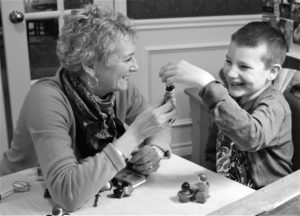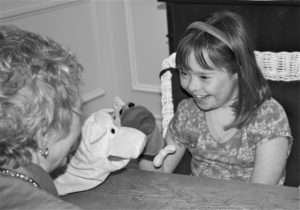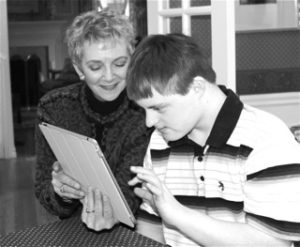Approach to Therapy

With more than 40 years of experience as a certified Speech-Language Pathologist, Susie’s approach to therapy promotes an enthusiasm for learning, while fostering trust and security. She practices from an office in her home, a setting which helps children and their parents feel comfortable and ready to make progress. It is a welcoming place to focus, to share, to engage… to gain confidence.
Susie’s approach to therapy considers the “whole” child. With this in mind, she actively involves parents in treatment programs, encouraging them to provide the feedback and insights necessary for her to understand the unique concerns, preferences and/or motivations their children may have.

These partnerships, along with Susie’s keen ability to listen, aid greatly in conducting evaluations, ongoing analyses and the development of customized therapy goals for each child.
Susie’s creativity, sensitivity, and ability to think “outside the box” are key to helping her children progress. Overall, Susie values the fundamental need for effective communication skills in family, school, social, and work settings.
Practice Specialties
Susie evaluates and treats children, from about the age of two on through the early adult years, with particular emphasis on:

- Articulation difficulties associated with delayed development, phonological disorders, verbal dyspraxia, dysarthria, and craniofacial disorders (difficulties with speech intelligibility);
- Listening, auditory memory and receptive language delays/disorders (difficulties with understanding and remembering incoming language);
- Expressive language delays/disorders (late onset talking; difficulties with learning vocabulary, retrieving words, making sense, explaining ideas specifically, constructing sentences, using correct syntax/grammar);
- Conversational skills enhancement (verbal and non-verbal conversational techniques to develop more satisfying interpersonal relationships);
- Autism spectrum disorders (varying difficulties with receptive/expressive language, speech, social thinking, social engagement, turn-taking, behavioral regulation);
- Basic augmentative communication approaches (using other methods to help express ideas when speech is absent or very difficult to understand — e.g. pictures, signs, written messages, computers, voice output devices, etc.);
- Selected chewing/sucking/swallowing issues; and,
- Selected fluency and speaking rate issues (speaking too rapidly, stuttering, excessive stopping and starting).